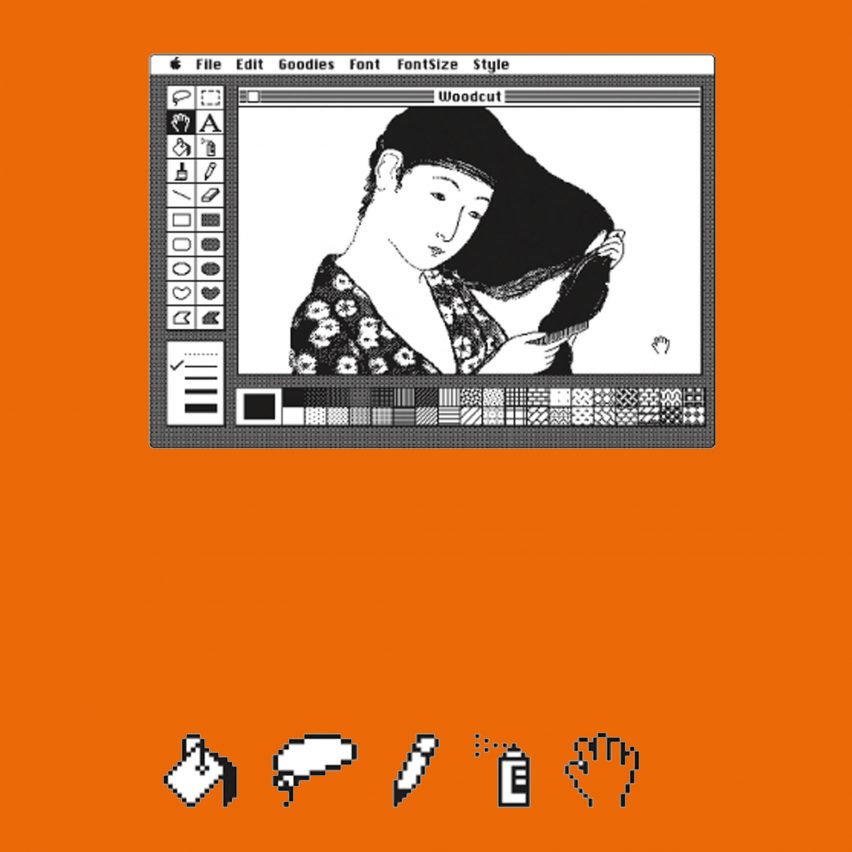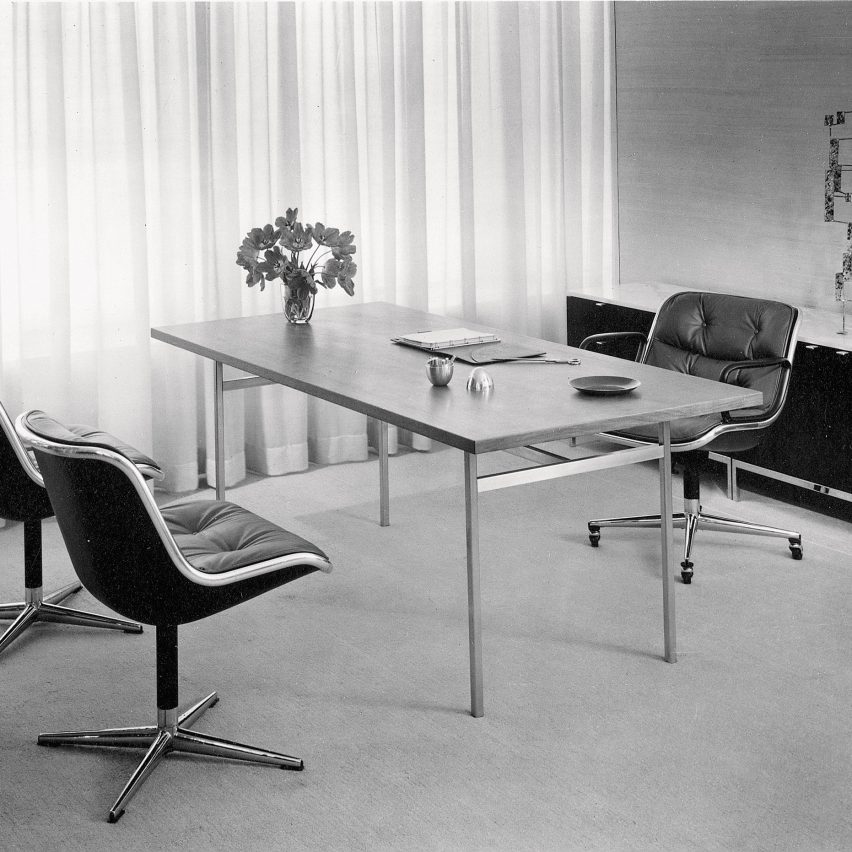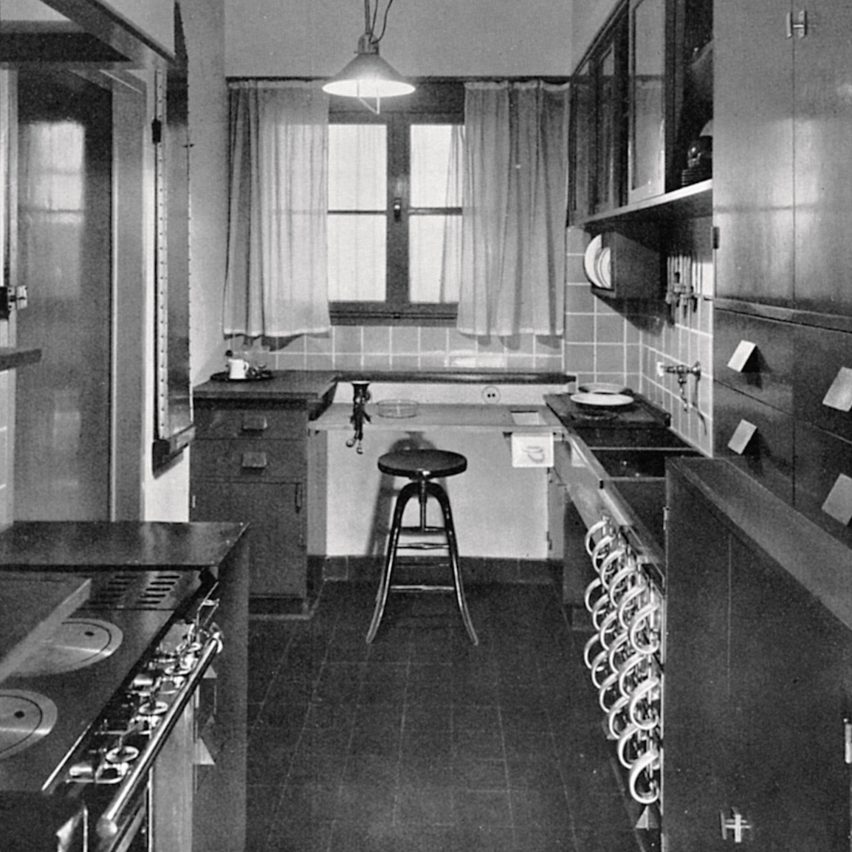
Five female trailblazers who changed the field of design
Charlotte and Clementine Fiell's book, Women in Design, highlights what made figures like Apple icon designer Susan Kare and architect Zaha Hadid revolutionary. The authors pick five women from the book who transformed design.
The recently published book, Women in Design: From Aino Aalto to Eva Zeisel, by mother and daughter duo Charlotte and Clementine Fiell aims to redress the balance of current scholarship about the history of design.
"The role of women in design has always been woefully under represented in museum collections and exhibitions as well as in the existing literature," the authors told Dezeen.
"That was one of the reasons why we decided the time had come to redress the situation and uncover the 'hidden' history of women working in the design industry."
The book features some well-known names including Anni Albers who was the subject of a recent retrospective at London's Tate Modern museum, Coco Chanel, Lucienne Day and Laura Ashley.
There are also designers whose work might be easy to recognise, but whose names have escaped popular imagination, such as Miaja Isola, whose colourful prints are still used across the Marimekko range today, and furniture designer Grete Jalk, often referred to as "the Grande Dame of Danish Design".
According to the authors these female designers "were often working with the odds completely stacked against them" in male-dominated industries.
As well as highlighting the often unrecognised work of these designers in fashion, textiles, architecture, graphic, product, industrial and transportation design over the last century, the authors hope that the book will inspire the next generation of designers who are currently studying.
Here are the author's picks of five women whose work has made a big impact:

Susan Kare "made our computers friendlier"
"Susan Kare is one of the great pioneers of on-screen digital design. Not only did she develop some of the earliest successful digital fonts, she also designed the first-ever computer icons for Apple – which helped to establish a new visual language for digital-interface design.
"In 1982, she joined Apple and began designing graphics, fonts and icons for its nascent Macintosh operating system. The family of icons she came up with for the Apple Mac represented one of the first graphical user interfaces ever to be used on a commercial computer.
Instead of having to type in complicated lines of text commands, users could interact with easy-to-understand pictogram images, making the operation of computers infinitely easier. Kare's clever click-to-command icons can be largely credited for the desktop computing revolution that followed the Apple Macintosh's launch in 1984.
"The genius of Kare's icons was that they were representations of familiar objects – the trash can, the bomb, the paint can, the ticking watch, the floppy disk, the font suitcase, and so on – and had a whimsical quality that gave them an endearing emotional appeal."

Florence Knoll Bassett "re-imagined workplace spaces"
"Florence Knoll Bassett revolutionised the design of workplaces, while redefining the concept of modernity in the postwar era, and beyond. A gifted designer, she had a sharp eye for colour, form and space, and a steely determination, which was summed up in her famous adage, 'No compromise, ever'.
"Having been taught by the three towering figures of European Modernism – Marcel Breuer, Walter Gropius and Ludwig Mies van der Rohe – Knoll enjoyed the best grounding any young aspiring architect could have ever hoped for. This held her in good stead when she began working for the furniture company set up by her husband, Hans Knoll, which later became known as Knoll Associates in recognition of their partnership.
"Under her creative direction, the company set a new level of aesthetic refinement within the American furniture industry. And after her husband's untimely death in 1955, the firm under Knoll's direction continued to flourish.
"Crucially, she was a genius space-planner and colourist and as a result her pioneering airy, open-plan 'Knoll look' interior schemes changed the office landscape of corporate America, and ultimately had an impact on the way offices are still designed today."

Zaha Hadid "broke the architectural glass ceiling"
"As the first female star architect, Zaha Hadid had an enormous impact on the perceived status of women in design. The sculptural dynamism of her radical architecture and design work was an expression of her feisty personality, which emboldened her to challenge the design status quo and relentlessly push the boundaries of both form and function.
"Her early career highlighted the difficulties women faced professionally in the realms of architecture and design, for despite winning a prestigious architectural competition in 1982, it took her nearly a decade to get her first building built – the Vitra Fire Station. But her headstrong determination and remarkable creative talents could not be stifled and, ultimately, she succeeded spectacularly.
"This 'Queen of the Curve' had singular creative vision that not only altered the design and architecture landscape, but showed by example how a woman could conquer the upper echelons of those worlds on her own terms."

Margaret Calvert "made way-finding easier"
"In the late 1950s, Margaret Calvert working alongside her ex-tutor, Jock Kinneir, employed a research-based approach for the development of a revolutionary motorway signage system for use on Britain's newly opened motorways.
"This extensive signage programme was cleverly devised using separate letter tiles laid out on a grid in order to determine their overall size and spacing. Using their specially designed transport sans-serif typeface and a combination of lower and upper case letters, the pair were able to maximise legibility so their signs could be better read at high driving speeds.
"The remarkable modern clarity of their motorway signage led to the duo then being commissioned to develop another comprehensive system of lettering and graphics. This time they designed signage for all primary and non-primary roads in the UK, which influentially featured 'friendly' pictograms – thereby changing the look, usability and feel of road signage forever."

Margarete Schütte-Lihotzky "invented the modern kitchen"
"Margarete Schütte-Lihotzky was Austria's first female architect and is best remembered today for designing the Frankfurt Kitchen in the 1920s. This state-of-the-art 'galley-style' model kitchen had a rational layout and was innovative because it was based on time-and-motion efficiency studies. It was produced on a large scale and was hugely influential in the development of modern built-in kitchens.
"Schütte-Lihotzky's remarkably efficient kitchen design boasted numerous space-efficient and labour-saving features, including a fold-down ironing board, a swivelling stool and integrated aluminium storage containers with handles that enabled their contents to be poured easily.
"The Frankfurt Kitchen was so ingeniously conceived it was able to consolidate everything a housewife needed to complete her household chores, from cooking to ironing, into a compact space measuring just 1.9 metre by 3.4 metre. This 'housewife's laboratory' was the influential progenitor of today's modern kitchen."
Women in Design: From Aino Aalto to Eva Zeisel by Charlotte Fiell and Clementine Fiell is published by Laurence King Publishing.